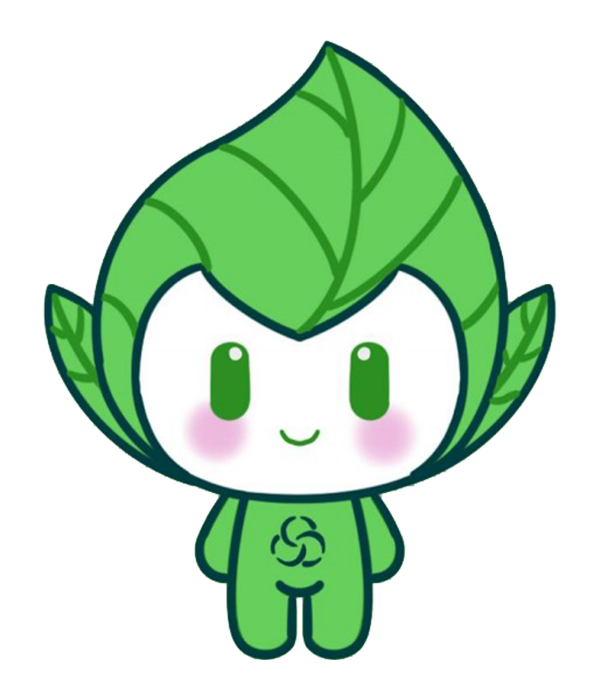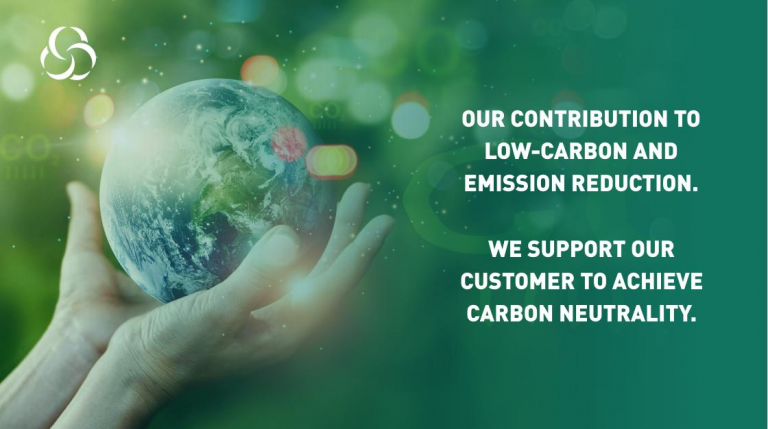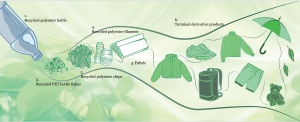More and more clothing brands are starting to use recycled polyester fibers to promote environmentally friendly production concepts. Waste polyester bottles such as mineral water bottles and beverage bottles are the raw materials for the production of recycled polyester fibers. According to relevant estimates, for every 1 ton of recycled polyester fiber produced, 40,000-50,000 waste polyester bottles can be recycled. The process of recycling plastic bottles into polyester fibers to make clothes involves several key steps, from collecting and cleaning the plastic bottles to the final production of ready-to-wear clothing.
- Collection and Sorting
Collection: Collect discarded plastic bottles, typically PET (polyethylene terephthalate) bottles.
Sorting: Sort the plastic bottles by material, color, and use to ensure only PET bottles suitable for recycling into polyester fibers are used.
- Cleaning and Shredding
Cleaning: Thoroughly clean the collected plastic bottles to remove labels, adhesives, and residues.
Shredding: Shred the cleaned plastic bottles into small flakes. This step helps remove impurities and prepares the material for melting.
- Melting and Extrusion
Melting: Melt the plastic flakes at high temperatures to form molten plastic.
Extrusion: Extrude the molten plastic through spinnerets to form filaments or fibers. These fibers are cooled and cut into staple fibers or drawn into continuous filaments.
- Spinning and Weaving/Knitting
Spinning: Spin the staple fibers or continuous filaments into yarn. The yarn can be processed in different ways, such as stretching, crimping, or heat treatment, to improve its performance.
Weaving or Knitting: Weave or knit the yarn into fabric. Weaving produces tightly woven fabrics, while knitting produces more elastic fabrics.
- Dyeing and Finishing
Dyeing: Dye the fabric using environmentally friendly dyes and techniques to reduce environmental impact.
Finishing: Apply finishing treatments to the fabric, such as anti-wrinkle, antibacterial, or waterproof treatments, to enhance its functionality and comfort.
- Woven garments
Cutting: Cut the fabric into different pieces according to the design patterns.
Sewing: Sew the cut pieces into garments. This step includes stitching, assembling zippers, and adding buttons and other details.
Currently, SYS GROUP has an annual production capacity of 150,000 tons of recycled polyester fibers. Their products are positioned as differentiated and functional, covering hundreds of varieties across three major series: POY, FDY, and DTY. Their products have obtained international environmental certifications such as GRS (Global Recycled Standard) and OKEO-TEX100 low carbon product certification. Additionally, SYS GROUP has developed projects like solar photovoltaic power generation, energy performance contracting, and reclaimed water reuse, continuously implementing energy-saving and emission reduction goals, thus fully realizing the concept of green development.




